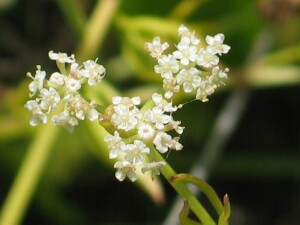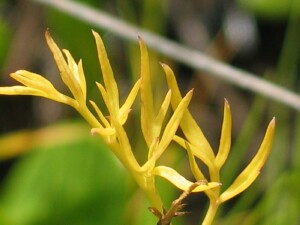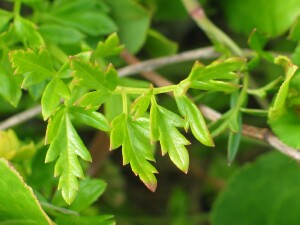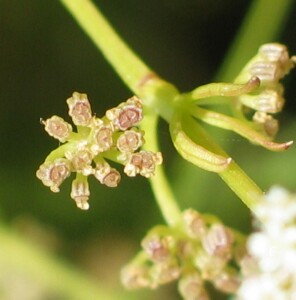Sea Celery
Back | Salinity Indicator Plants Home | Common name home | Scientific name home | Photo Gallery | Glossary
| Sea Celery photos | Family: Parsley (Apiaceae syn. Umbelliferae) |
| Scientific Name: | Apium prostratum | 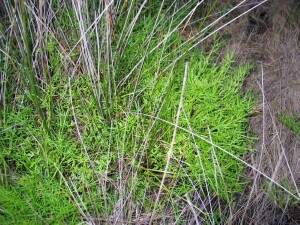 Plant of Sea Celery Photo: A J Brown | |||||
Status: | Native to all Australian States. Also found in New Zealand and South America. | ||||||
Plant Description: | Prostrate and sprawling, multi-stemmed, biennial or perennial, with branches from 30-70 cm long. Pinnatisect (finely pinnate) leaves 2-40 cm long (longer at the base) and each segment 2-7 mm wide. Flowers in small clusters (or umbels) 3.5-7 cm wide, either without stalks or on short stalks to 20 mm long. Petals oval-shaped to 0.8-1.5 mm long and white. Fruit obovate to circular, 1.3-2.5 mm long with 5 thick ribs to each segment, obscuring the furrows between the ribs. Flowering Spring-summer. | ||||||
Habitat: | Found mostly on the edges of coastal saltmarsh and sea cliffs but sometimes extending along brackish inland creeks. Tolerates moderate salinity, provided soils are damp to waterlogged.
| ||||||
Comments: | Similar to Annual Celery (Apium annuum) which is generally a smaller erect plant with branches to 20 cm long only, pinnate leaves to 5 cm long only and fruit with noticeable furrows between the ribs. Two varieties of Apium prostratum are recognised. Variety prostratum has long linear to lanceolate leaves or leaf segments, 6-15 times longer than wide. Variety filiforme has divided leaflets with elliptic, ovate or obovate segments, 2-3 times longer than wide. |
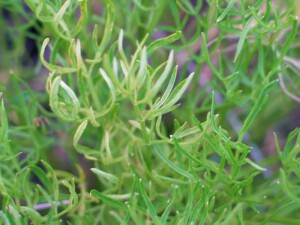 Leaves of Sea Celery var. prostratum Photo: A J Brown | 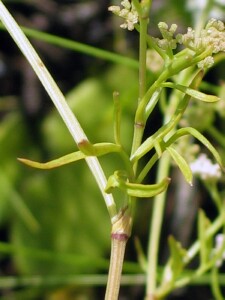 Stem, leaves and developing flower heads of Sea Celery var. prostratum Photo: A J Brown |
|
Photo: A J Brown |
Photo: A J Brown |
|

